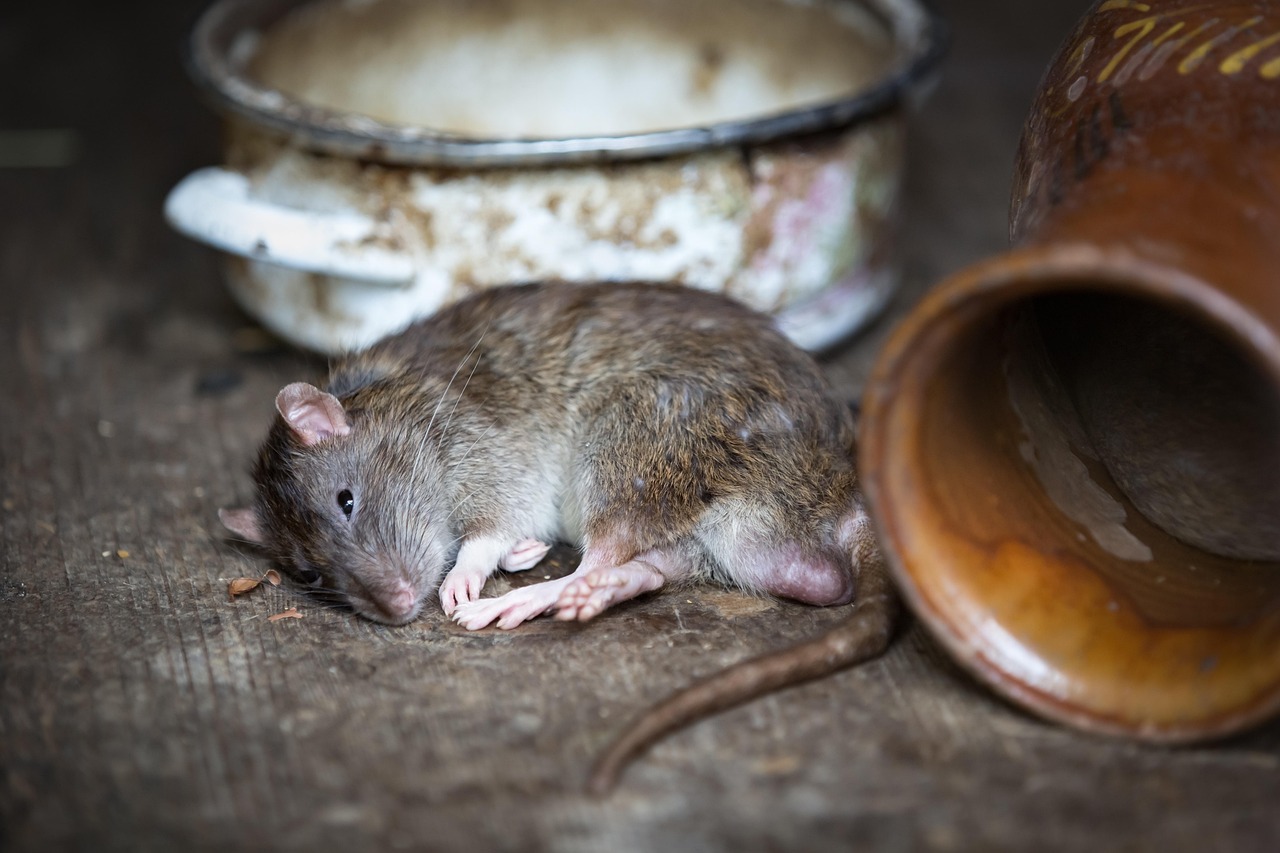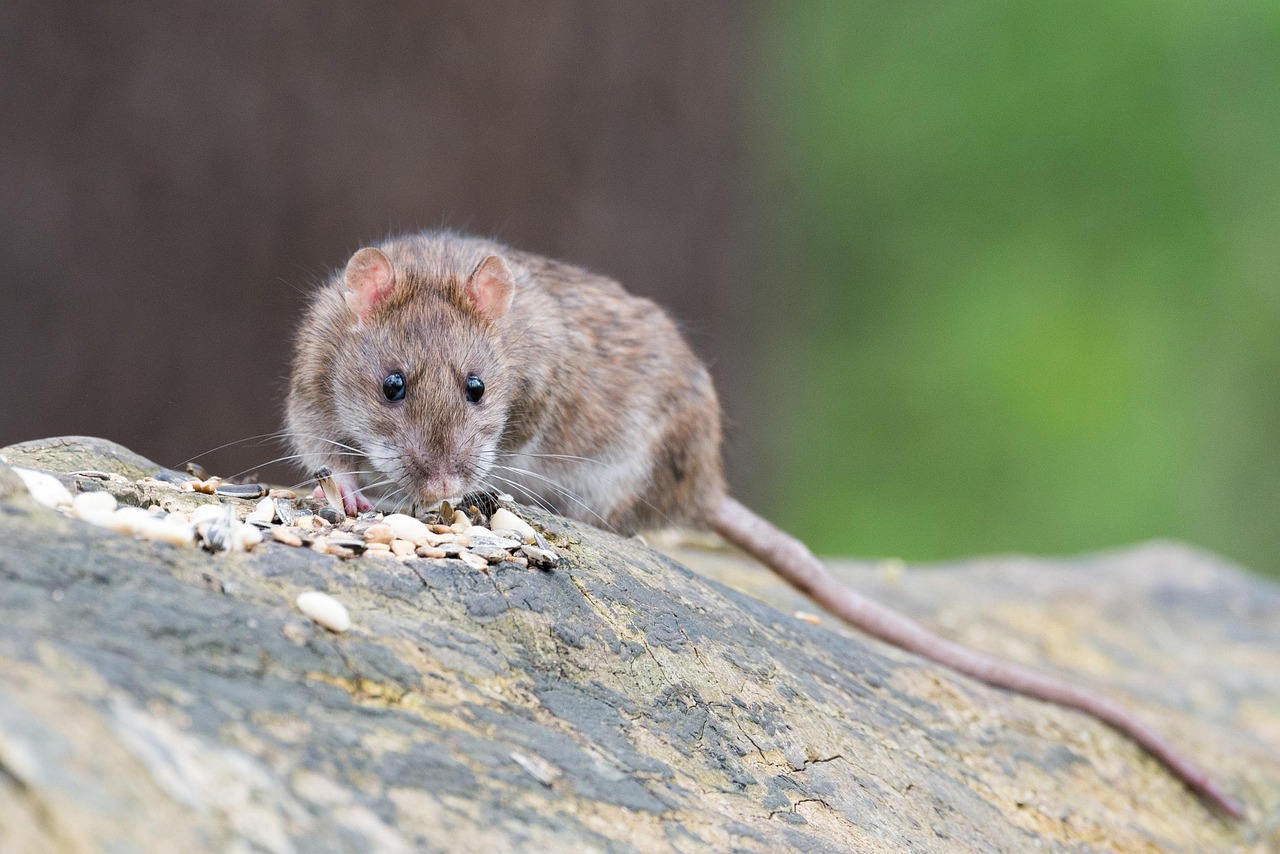- Roof rats are destructive and dangerous—they chew wires, damage insulation, and spread diseases through droppings and urine.
- Know the signs of infestation such as scratching noises in attics, droppings, gnaw marks, grease trails, and nests.
- Elimination requires a multi-step approach: seal entry points, remove food sources, set traps, and use bait stations with caution.
- Professional help may be necessary for larger infestations, especially when rats are widespread or difficult to reach.
- Prevention is key: trim trees, secure garbage bins, store firewood off the ground, fix water leaks, and inspect roofs and attics regularly.
- Roof rats adapt quickly—ultrasonic devices and common myths like relying on cats or cheese are not reliable solutions.
- Consistent year-round maintenance helps protect your home, since rats become more active indoors during colder months.
Roof rats may be small, but the problems they bring into your home can be massive. From chewing wires to contaminating food, these pests are a homeowner’s nightmare. If you’ve ever heard scratching in the attic or spotted droppings near your roofline, there’s a good chance you’re dealing with roof rats.
This complete guide will walk you through everything you need to know about roof rat control—what they are, why they’re dangerous, how to spot them, and most importantly, how to get rid of them and keep them away for good.
What Are Roof Rats?
Roof rats, also known as black rats or ship rats, are rodents that prefer high places like attics, rafters, and trees. Unlike their cousin, the Norway rat, which lives at ground level, roof rats are agile climbers. They are slimmer, have larger ears, and often have a long, scaly tail that helps them balance as they climb.
- Size: 6–8 inches long, not including the tail
- Tail length: Longer than their head and body combined
- Color: Brown or black with a lighter underside
- Habitat: Roofs, attics, upper levels of buildings, and tall vegetation
Because they prefer high nesting spots, they often enter homes through roof vents, eaves, or tree branches that touch the roofline.
Why Are Roof Rats a Problem?
Roof rats aren’t just annoying—they can cause real damage. Here’s why you should take an infestation seriously:
- Structural damage: They chew wires, insulation, and wood, sometimes sparking house fires.
- Health risks: They can spread diseases like salmonella and rat-bite fever through droppings, urine, and saliva.
- Food contamination: Roof rats gnaw through packaging and contaminate food supplies.
- Breeding speed: A female roof rat can have up to 40 babies a year. Infestations escalate quickly.
Ignoring roof rats can turn a small problem into a costly repair bill.
How Do You Know If You Have Roof Rats?
Wondering whether that noise in the attic is just the wind or something worse? Look for these signs of roof rat activity:
- Scratching or scampering sounds at night in the attic or walls
- Droppings that are about ½ inch long with pointed ends
- Gnaw marks on wires, wood, or food containers
- Grease marks along beams and walls where they travel
- Nests made of shredded paper, insulation, or leaves in hidden corners
- Sightings of rats on power lines, fences, or rooflines
If you notice even a couple of these, it’s time to take action. Roof rats rarely live alone.
Where Do Roof Rats Hide in Homes?

Roof rats are excellent climbers and prefer quiet, elevated spaces. Common hiding spots include:
- Attics and rafters
- Inside walls and ceilings
- Behind appliances
- In garages or sheds
- In outdoor trees, ivy, or thick shrubbery that touches the home
Because they’re nocturnal, you might not see them during the day, but they leave behind plenty of evidence.
Roof Rat Control: Can You Handle It Yourself?
Many homeowners wonder if they can handle roof rat control on their own or if it’s better to call a professional. The answer depends on the severity of the problem.
- Small infestations: If you catch the issue early, traps and sealing entry points may be enough.
- Large infestations: If you’re hearing constant movement, finding multiple nests, or seeing rats during the day, it’s often best to bring in pest control experts.
The key is knowing when DIY works and when professional help is needed.
How to Get Rid of Roof Rats
Effective roof rat control involves a combination of elimination and prevention. Here are the steps you should take:
Step 1: Seal Entry Points
Roof rats can squeeze through openings as small as ½ inch. Inspect your home carefully and close off any gaps.
- Seal cracks in the foundation and walls
- Cover roof vents with wire mesh
- Trim tree branches at least 3 feet away from your roof
- Repair damaged soffits and eaves
Step 2: Remove Food Sources
Roof rats are opportunistic eaters. Cutting off their food supply makes your home less appealing.
- Store dry goods in sealed containers
- Keep pet food indoors and sealed at night
- Secure garbage bins with tight lids
- Remove fallen fruit from yards
- Clean up outdoor bird seed and pet bowls
Step 3: Set Traps
Trapping is one of the most effective roof rat control methods. Use snap traps, electronic traps, or multiple-catch traps.
- Place traps along walls, beams, and travel paths
- Bait traps with peanut butter, nuts, dried fruit, or bacon
- Use multiple traps to increase success rates
- Check traps daily and dispose of rats safely
Step 4: Consider Bait Stations
Rodent bait stations contain poison that roof rats eat and carry back to their nests. While effective, these should be used with caution, especially if you have pets or children.
Step 5: Call the Professionals
If traps and DIY methods aren’t working, pest control services have the expertise and tools to eliminate infestations thoroughly. They may use a combination of exclusion, trapping, and safe rodenticide methods.
Are Ultrasonic Repellents Effective for Roof Rat Control?
Ultrasonic devices are marketed as rodent repellents, but research shows mixed results. Some rats may avoid the sound at first but eventually get used to it. For lasting roof rat control, traps, exclusion, and sanitation are far more reliable.
What’s the Difference Between Roof Rats and Other Rats?
It’s easy to confuse roof rats with Norway rats or house mice. Knowing the difference helps with control strategies.
- Roof Rats: Slimmer bodies, longer tails, prefer climbing, nest in attics and trees.
- Norway Rats: Heavier bodies, shorter tails, prefer ground-level burrows.
- Mice: Much smaller, with shorter tails, usually nest indoors near food sources.
Each type requires a slightly different approach, but sealing entry points and removing food sources works for all.
How Do Roof Rats Get Into Homes?

Roof rats are resourceful climbers. Common entry points include:
- Gaps in rooflines and eaves
- Attic vents without screens
- Open chimneys
- Gaps around utility pipes and wires
- Tree branches that touch the roof
- Vines or ivy climbing up exterior walls
A careful inspection around your home’s exterior is the first step toward long-term control.
Roof Rat Prevention Tips
Once you’ve eliminated roof rats, the most important step is making sure they don’t come back. Roof rats are persistent creatures—if they find food, water, or shelter, they’ll keep trying to get inside. Prevention is your long-term solution, and it’s often far easier and less stressful than dealing with another infestation.
Here’s how to keep them out for good:
Trim Trees and Shrubs Away From Your Home
Roof rats are excellent climbers and often use trees, vines, or overgrown bushes as “bridges” to reach your roof. To stop them:
- Keep tree branches trimmed at least 3 feet away from the roofline.
- Remove climbing ivy or vines from exterior walls, since rats can use them as ladders.
- Thin out dense shrubbery around your home’s foundation to eliminate hiding spots.
Store Firewood and Lumber Off the Ground
Piles of wood or construction materials make perfect nesting spots for roof rats. Storing them directly on the ground only makes it easier for rats to move in.
- Elevate firewood and lumber stacks at least 18 inches off the ground.
- Store them 20–30 feet away from your house, if possible.
- Keep piles neat and dry to make them less appealing as nesting areas.
Keep Garbage Bins Sealed and Away From the House
Garbage is one of the biggest attractions for roof rats. If they smell food, they’ll find a way in.
- Use sturdy garbage bins with tight-fitting lids.
- Don’t overfill bins, which can prevent lids from closing all the way.
- Rinse recycling containers to remove food residue.
- Keep trash bins stored away from doors, walls, and garages so rats can’t use them as entry points.
Install Door Sweeps and Check Gaps Around Doors
Even though roof rats often enter from above, they won’t hesitate to squeeze through tiny gaps at ground level.
- Install door sweeps on exterior doors to block gaps at the bottom.
- Check garage doors for cracks or worn seals.
- Inspect sliding doors and basement entrances for gaps and repair as needed.
Regularly Inspect and Maintain Roof and Attic Areas
Your roof is the main target for roof rats, so regular maintenance goes a long way in keeping them out.
- Inspect soffits, fascia boards, and roof vents for holes or gaps.
- Cover vents and chimneys with sturdy wire mesh.
- Check insulation in the attic for signs of nesting.
- Replace damaged shingles or roofing materials quickly to prevent easy access.
Eliminate Outdoor Food Sources
Even if you keep your home spotless, outdoor food can still attract roof rats.
- Harvest fruit trees promptly and remove fallen fruit from the ground.
- Avoid leaving pet food bowls outside overnight.
- Limit bird feeders or place them far from the house and clean up spilled seed.
- Keep gardens tidy and use protective fencing or mesh if needed.
Fix Water Leaks and Eliminate Standing Water
Like all pests, roof rats need water. Leaks and standing water give them easy access.
- Repair leaky faucets, outdoor pipes, and garden hoses.
- Empty water from plant saucers, buckets, or kiddie pools.
- Ensure gutters and downspouts drain away from the house.
By combining these measures, you create an environment that’s far less attractive to roof rats. The key is consistency—regular inspections and good habits will keep your home protected year-round.
Roof Rat Control for Apartments and Multi-Unit Homes
If you live in an apartment or multi-family home, roof rat control gets trickier. Rats can travel between units through shared walls and attics. In these cases:
- Report infestations to building management immediately
- Work with neighbors to eliminate food and water sources
- Encourage professional pest control services for the whole property
Individual traps may help, but long-term solutions require cooperation.
Are Roof Rats Dangerous to Pets?
Yes, roof rats can pose risks to pets. Rats can carry fleas and ticks that spread disease, and they may also contaminate pet food. While they usually avoid direct conflict with animals, a cornered rat might bite in self-defense. Always clean up after pets and avoid leaving their food outdoors overnight.
Roof Rat Control Myths
There are plenty of myths about roof rats and how to control them. Let’s clear up a few:
- Myth: Cats alone can solve a roof rat problem. While cats may catch a rat or two, they can’t eliminate entire infestations.
- Myth: Leaving lights on will keep rats away. Roof rats adapt quickly and aren’t deterred by light.
- Myth: Roof rats only live in dirty homes. Even spotless homes can attract roof rats if there are food and entry points available.
- Myth: Cheese is the best bait. While rats may nibble cheese, they prefer nuts, seeds, and peanut butter.
Roof Rat Control Costs
If you decide to hire a professional, costs vary depending on the severity of the infestation.
- Inspection fees: $100–$200
- Exclusion work (sealing entry points): $200–$600
- Full-service pest control: $300–$1,000+ depending on property size and infestation level
While this may seem pricey, consider the potential cost of fire damage, wiring replacement, or medical bills if you let the problem grow.
Roof Rat Control in Different Seasons
Roof rat activity often changes with the weather:
- Spring and Summer: More food outdoors, rats may stay in trees and yards but still nest in attics.
- Fall and Winter: Roof rats seek warmth and shelter inside homes, making infestations more noticeable.
Seasonal inspections help you stay ahead of problems year-round.
Final Thoughts
Roof rats are sneaky, destructive, and a serious threat to your home’s safety and cleanliness. The good news is that with a mix of exclusion, trapping, and prevention, you can protect your home from these pests.
The key steps to remember are to seal every possible entry point, remove food and water sources, set traps strategically, call professionals when needed, and stay vigilant with prevention measures.
By being proactive, you can stop roof rats before they take over your attic and peace of mind.
